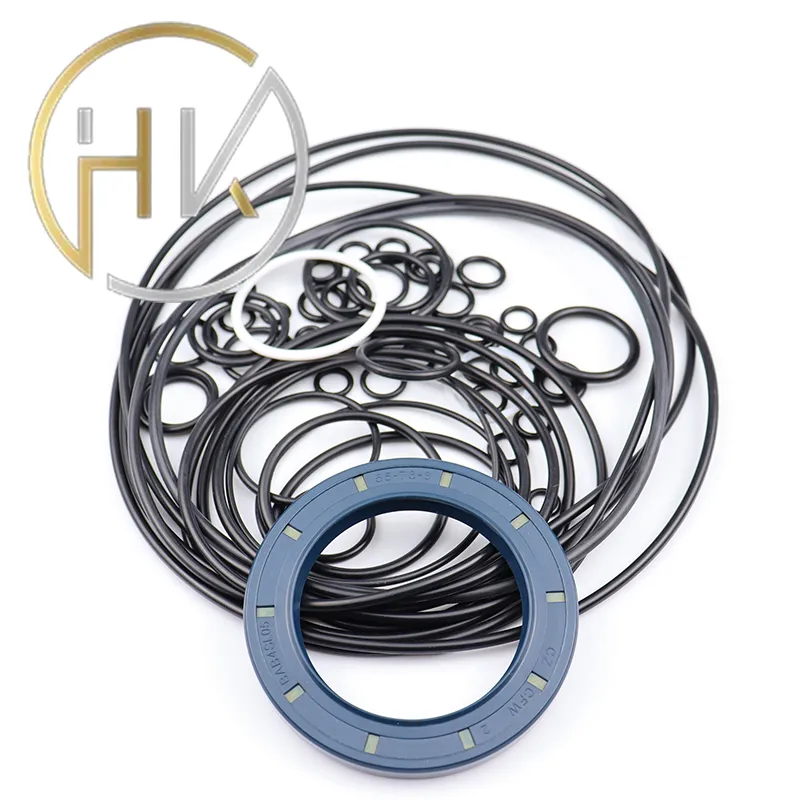நவ் . 19, 2024 10:47 Back to list
cylinder wiper
The Importance of Cylinder Wipers in Industrial Applications
In various industrial processes, particularly in manufacturing and construction, the efficiency and reliability of machinery are paramount. Among the many components that ensure the smooth operation of these machines, cylinder wipers hold a significant position. These seemingly small components play a crucial role in maintaining the performance and longevity of hydraulic and pneumatic systems. Understanding the function, benefits, and best practices related to cylinder wipers is essential to optimizing industrial operations.
What are Cylinder Wipers?
Cylinder wipers, also known as rod wipers, are seals designed to remove contaminants from the surface of hydraulic or pneumatic rods. They are situated at the opening of a cylinder and serve the essential function of preventing dirt, debris, and other foreign particles from entering the system. Contamination can lead to a range of issues, including increased wear, reduced efficiency, and potential system failures. Thus, the importance of a robust and effective wiper cannot be overstated.
Key Functions of Cylinder Wipers
1. Contaminant Removal The primary function of cylinder wipers is to scrape away contaminants from the rod each time the rod extends or retracts. This action prevents particles from entering the hydraulic or pneumatic cylinder, which could cause significant damage over time.
2. Pressure Maintenance By ensuring a clean seal, wipers help maintain proper pressure within the system. A leak due to contamination can lead to a loss of system efficiency and effectiveness.
3. Extended Service Life By protecting cylinder components from abrasions and wear caused by dirt and debris, wipers contribute to a longer service life for hydraulic systems. This longevity reduces maintenance costs and downtime, which is vital in a production environment.
4. Efficiency and Performance Clean cylinders operate more efficiently, which ultimately enhances the performance of the machinery. Improved efficiency translates into better energy utilization and reduced operational costs.
cylinder wiper

Choosing the Right Cylinder Wiper
Selecting the right cylinder wiper is critical. Factors to consider include the material, design, and specific application requirements. Common materials for wipers include polyurethane, rubber, and silicone, each with unique properties that make them suitable for different environments and types of contamination.
1. Material Properties Polyurethane is often favored for its durability and resistance to wear, while rubber may offer better flexibility in certain applications. Understanding the working environment—such as exposure to heat, chemicals, or extreme conditions—is crucial for selecting the appropriate material.
2. Design The design of the wiper also affects its effectiveness. Some designs incorporate additional features like dust seals or multi-spring designs to enhance performance further. It is essential to evaluate the specific needs of the application to choose the best design.
3. Application Context Different applications may require different wiper types. For example, in automotive applications, wipers must cope with high speeds and fluctuating temperatures, while in agricultural machinery, they may face exposure to larger particles and harsh conditions.
Maintenance Best Practices
Regular maintenance and inspection of cylinder wipers are essential to ensure their effectiveness. Operators should check for signs of wear, such as cracks or deformities, and replace wipers as needed. Keeping the surrounding area clean and minimizing sources of contamination is also crucial for prolonging the life of both the wipers and the overall system.
Conclusion
In conclusion, cylinder wipers are integral components that play a vital role in the functionality and longevity of hydraulic and pneumatic systems. Their ability to clean contaminants, maintain pressure, and enhance system efficiency makes them indispensable in various industrial applications. By understanding their significance and adhering to best practices for selection and maintenance, industries can optimize their machinery's performance and reduce operational costs.
-
TCN Oil Seal Metal Ring Reinforcement for Heavy Machinery
NewsJul.25,2025
-
Rotary Lip Seal Spring-Loaded Design for High-Speed Applications
NewsJul.25,2025
-
Hydraulic Cylinder Seals Polyurethane Material for High-Impact Jobs
NewsJul.25,2025
-
High Pressure Oil Seal Polyurethane Coating Wear Resistance
NewsJul.25,2025
-
Dust Proof Seal Double Lip Design for Construction Equipment
NewsJul.25,2025
-
Hub Seal Polyurethane Wear Resistance in Agricultural Vehicles
NewsJul.25,2025
-
The Trans-formative Journey of Wheel Hub Oil Seals
NewsJun.06,2025
Products categories
















